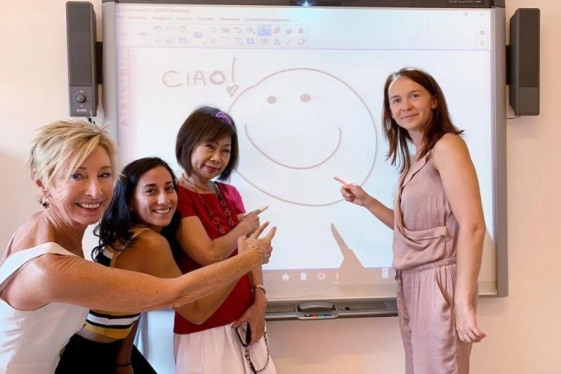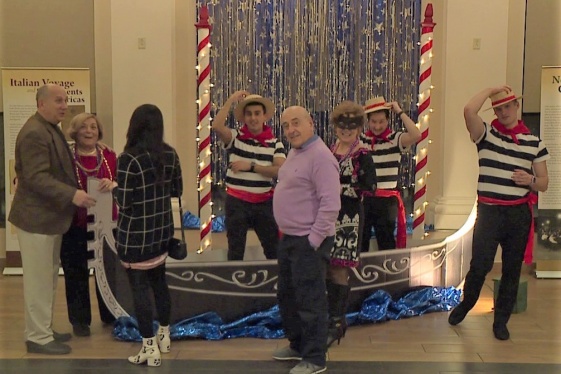

We have been talking dialects, grammar rules, but for once let’s go back to the basics: the alphabet. How’s your ABCs? Well, you might want to review it quickly before going on with this article. You’ll see why.
First of all, let’s review quickly the main differences with the English alphabet. The Italian alphabet only has 21 letters, plus 5 foreign ones (j, k, w, x, y), and the vowels are pronounced considerably differently. “A” is pronounced “ah,” “E” is pronounced “eh,” “I” is pronounced “eeh,” “O” is pronounced “oh,” and “U” is pronounced “oo.” Except for those little differences, the Italian alphabet is pretty much the same.
What are we doing today with our ABCs? We are going to see how we can use it everyday! There are in fact some Italian expressions that are in fact based on the letters. Some might seem very similar to the English use, others are originals of the Italian language. Let’s see a few of them, dalla a alla zeta. There you are, this is a good one to start with. Meaning “from a to z,” as you can probably imagine, is used to refer to something that is done thoroughly, from the start to the end, in a complete way, or it can even mean “completely.” For example, Lucia mi ha raccontato cos’è successo alla festa dalla a alla zeta – Lucy told me what happened at the party from the beginning to the end. Essere all’abc or abbiccì – to be at the ABC – means that you are just at the basics of something, you have just started it and you only know the essential. L’abc or l’abbiccì – the ABCs – in fact indicates the basics. It corresponds to “101” in English. Matteo, hai proprio bisogno di rimparare l’abbiccì del corteggiamento – Mathew, you really need to go back to “flirting 101.” When you buy a flight, you might see the two letters A/R short for andata e ritorno – round trip. Continuing on the A line, non dire né a né ba – don’t say a or b – means that you don’t say anything at all.
When we say that something or someone is di serie A, we mean that they are the top class, the best, high quality. It’s an expression that comes from soccer and the categories used to classify the different levels of professional paying, serie A being at the top, followed by B and C, and serie D being amateurs. So, when in Italian we talk about serie B, we talk about something that is considered second class, second rating, not the worse, but not the top choice either. We can talk about piano B – plan B, just like in English, or lato B which is used to refer to the other side of a record or cassette tape or, probably more frequently nowadays, to indicate a person’s booty.
Let’s skip to the eighth letter of the alphabet with non capire un acca – to not understand and “h” – meaning not understanding anything. It comes from the fact that in Italian, and as a later tendency in Latin as well, the letter “h” does not have a sound at all, so it is like the “h” isn’t there, as if the “h” was nothing. Therefore, if you don’t understand an “h”, you don’t understand anything.
If you metti I puntini sulle i – dot the “i”s, you are a very precise person, probably too much since it has more of a negative connotation. Just like if you metti le stanghette sulle t – cross the “t”s. Going off the perfection theme, tondo come l’O di Giotto means that something “perfectly rounded” since there is a legend that tells about Giotto drawing an incredibly perfect circle freehand for the Pope to prove his artistic talent. But it can also be used to talk about a person that is a perfect dummy, a simpleton, too clueless. That is due to the other meaning of tondo that comes from the Tuscan language, meaning exactly dumb, foolish, of rough manners. Non saper fare la O con il fondo del bicchiere – not being able to draw a O with the bottom of a glass, as you probably can guess means that you are incapable of doing something pretty easy. It is sadly also used for people that are ignorant or uneducated.
When talking about defects or features of pronunciations we say parlare con la erre or avere la erre moscia used for people that talk with a French “r” that is more rounded and from the throat or the back of the mouth rather than the typical Italian “r” made by rolling the tongue. Or We can talk about avere s moscia or s sibilina (or s sibilante or s sifula); all those different terms to simply identify someone that has a lisp.
If we talk about driving we find the inversione a U – U turn, parcheggio a L – perpendicular parking, parcheggio a S – parallel parking, the last two referring in particular to the maneuvers that are necessary to perform that kind of parking.
XY are used as generic references like l’ora X – the zero hour, or il signor XY – Mr. XY, or again Sono arrivati X e Y – X and Y arrived.
Well, I think you are ready to book an A/R flight to Italy and if you non capisci un acca, don’t worry! You can go back to the abbiccì and become an Italian speaker di serie A.
delivered by Italian School NJ
You may be interested
-
Italian world language teacher 2015-2016
FRAMINGHAM PUBLIC SCHOOLS - JOB DESCRIPTION TITLE: World Language Teacher - Italian...
-
'Italy Stay Strong': What The Coronavirus Eme...
On the northern coast of Sicily, looking out toward the magnificent Aeolian Islands, Milaz...
-
‘Carnivale’ doubles as event to persuade YSU...
Lent begins next Wednesday but the Italian community of Youngstown celebrated their own Ma...
-
‘Il Canto degli Italiani’: What the Italian n...
The Italian football team and its fans are known for belting out rousing renditions of the...
-
‘In Other Words’ review: Jhumpa Lahiri’s love...
By Howard Norman Jhumpa Lahiri lived with her family in Rome in 2012. Though she...
-
‘Let’s Choose Three Words’: the Project dedic...
‘Let’s Choose Three Words’ is a new educational project promoted by the Ministry of Foreig...
-
‘Living in Rome’ talk accompanies Italian din...
An Italian Dinner and Talk on "Living in Rome: Duties, Distractions and Delights" will be...
-
‘Sons’ save Primavera program
A community program providing supplemental education in a foreign language to community ch...










